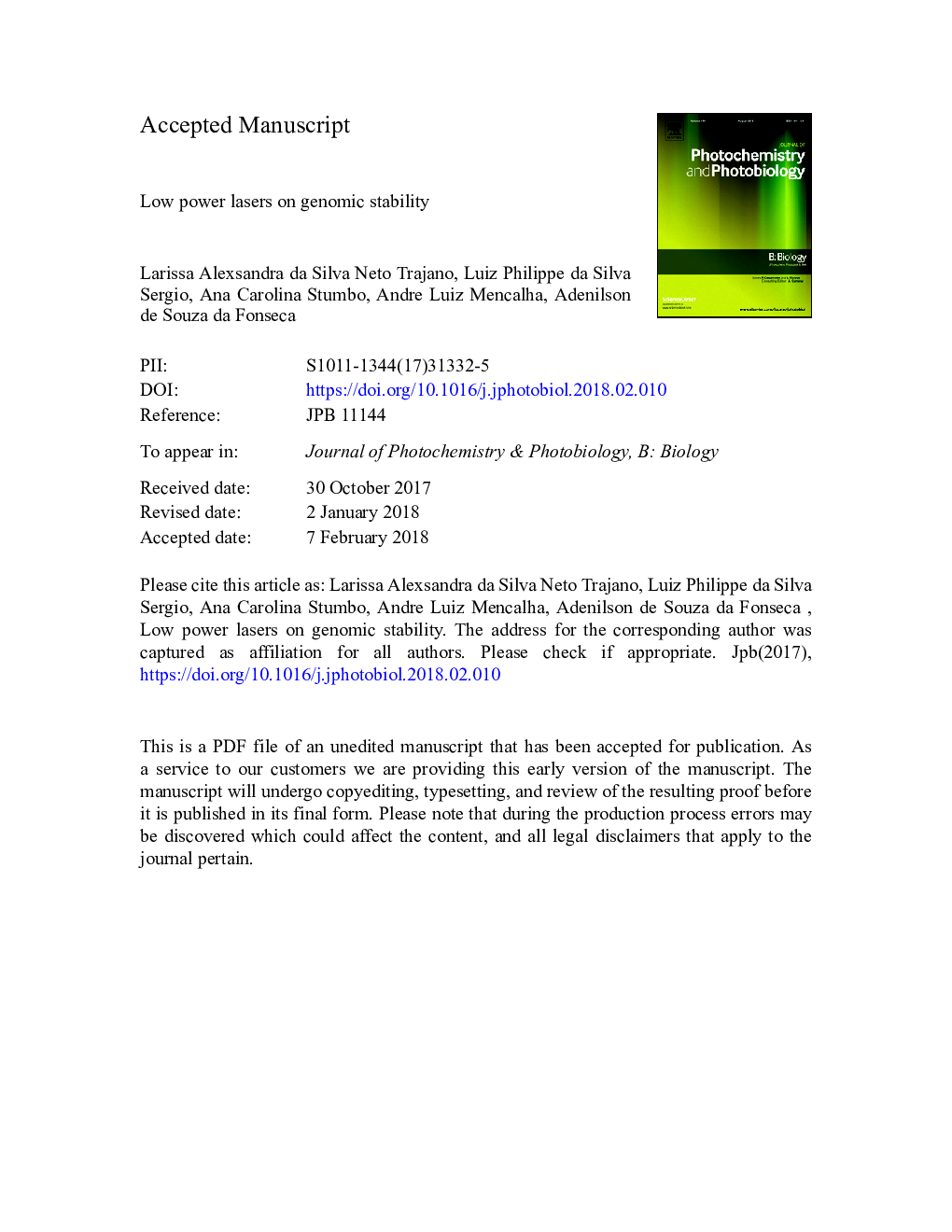| Article ID | Journal | Published Year | Pages | File Type |
|---|---|---|---|---|
| 6493362 | Journal of Photochemistry and Photobiology B: Biology | 2018 | 59 Pages |
Abstract
Exposure of cells to genotoxic agents causes modifications in DNA, resulting to alterations in the genome. To reduce genomic instability, cells have DNA damage responses in which DNA repair proteins remove these lesions. Excessive free radicals cause DNA damages, repaired by base excision repair and nucleotide excision repair pathways. When non-oxidative lesions occur, genomic stability is maintained through checkpoints in which the cell cycle stops and DNA repair occurs. Telomere shortening is related to the development of various diseases, such as cancer. Low power lasers are used for treatment of a number of diseases, but they are also suggested to cause DNA damages at sub-lethal levels and alter transcript levels from DNA repair genes. This review focuses on genomic and telomere stabilization modulation as possible targets to improve therapeutic protocols based on low power lasers. Several studies have been carried out to evaluate the laser-induced effects on genome and telomere stabilization suggesting that exposure to these lasers modulates DNA repair mechanisms, telomere maintenance and genomic stabilization. Although the mechanisms are not well understood yet, low power lasers could be effective against DNA harmful agents by induction of DNA repair mechanisms and modulation of telomere maintenance and genomic stability.
Related Topics
Physical Sciences and Engineering
Chemical Engineering
Bioengineering
Authors
Larissa Alexsandra da Silva Neto Trajano, Luiz Philippe da Silva Sergio, Ana Carolina Stumbo, Andre Luiz Mencalha, Adenilson de Souza da Fonseca,
